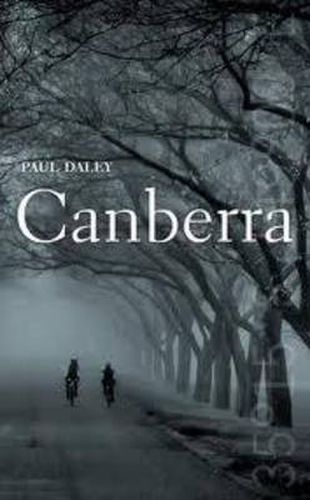Readings Newsletter
Become a Readings Member to make your shopping experience even easier.
Sign in or sign up for free!
You’re not far away from qualifying for FREE standard shipping within Australia
You’ve qualified for FREE standard shipping within Australia
The cart is loading…






An implicit sense of public service and ‘otherness’ has now come to permeate Canberra’s identity to a point that there is a great smugness, arrogance even, that the rest of Australia can hate us - but they’ll never know how good it is to live here.
Canberra is a city of orphans. People arrive temporarily for work, but stay on because they discover unanticipated promise and opportunity in a city that the rest of the country loathes, but can’t really do without. Daley’s Canberra begins and ends at the lake and its forgotten suburbs, traces of which can still be found on Burley Griffin’s banks. It meanders through the cultural institutions that chronicle the unsavoury early life of Canberra, the graveyard at St John’s where the pioneers rest and the mountains that surround the city. In Canberra, people don’t ask you where you went to school, as they do in Melbourne, or where your house is and how much you paid for it, as they do in Sydney. They ask you where you’ve come from. And how long you’re going to stay.
$9.00 standard shipping within Australia
FREE standard shipping within Australia for orders over $100.00
Express & International shipping calculated at checkout
An implicit sense of public service and ‘otherness’ has now come to permeate Canberra’s identity to a point that there is a great smugness, arrogance even, that the rest of Australia can hate us - but they’ll never know how good it is to live here.
Canberra is a city of orphans. People arrive temporarily for work, but stay on because they discover unanticipated promise and opportunity in a city that the rest of the country loathes, but can’t really do without. Daley’s Canberra begins and ends at the lake and its forgotten suburbs, traces of which can still be found on Burley Griffin’s banks. It meanders through the cultural institutions that chronicle the unsavoury early life of Canberra, the graveyard at St John’s where the pioneers rest and the mountains that surround the city. In Canberra, people don’t ask you where you went to school, as they do in Melbourne, or where your house is and how much you paid for it, as they do in Sydney. They ask you where you’ve come from. And how long you’re going to stay.
[[paul-daley-rev]]Cities have, in our popular culture, a tendency to gather their own particular set of clichés. Like a cast of characters on a midday TV show, their roles are fixed, enacted and repeated, and the stereotypes can be hard to shake off.
Canberra, Australia’s capital, is no exception.
Seen as a bureaucratic and political enclave, it’s known more for what it lacks rather than what it’s managed to wrest for itself. Peaceful is the kinder tag, boring the blunter one.
Paul Daley’s latest book tackles this national cringe head on – revealing a city that is both complex and fascinating in its makeup, and dogged by its reputation. It is a defence, but not necessarily an ardent one. Rather, like the rest of the titles in New South’s brilliant series, this is a real and thoughtful study of just how a city comes to be – in Canberra’s case, literally, rising up from the plains.
Divided into three parts, Daley first addresses the land’s early history: its colonial past and the terrible violence perpetrated against the Indigenous population. The following two-thirds deal with a more recent past, particularly Canberra’s unique beginnings as a purpose-built city. Like Brasilia (which in fact came after it), Canberra was chosen to be a capital before it even existed – scouted and voted upon as the perfect location for a capital that would embody Australia’s newfound democracy with grandeur and beauty. Yet, like all ideals, this one was inevitably compromised.
The book charts the staggered growth of the city, from Walter and Marion Burley Griffin’s original vision, based on the principles of the City Beautiful and Garden City Movement, to its eventual breakdown due to government in-fighting and design-by-committee.
What emerges is a city uniquely shaped and sculptured (and perhaps disappointed) by the politics it was supposed to house – a temporary Parliament House, suburbs starkly divided along class lines, cultural hubs that have withdrawn from the larger precincts to smaller shopping strips.
There are some wonderful moments of discovery throughout – including the unearthing of one of Marion’s beautiful original drafts of Canberra, thought to be lost or destroyed, in a cardboard cylinder in 2009, as well as an unbelievable aside about a Jack Russell and tiger snake caught in the ultimate Mexican stand-off (snakes, Daley writes, are a common threat in Canberra due to the city’s proximity to bushland).
Through Daley’s eyes, what could have been a bland lesson in federation becomes instead an intriguing narrative of power-play and cultural clash. A great addition to what is turning out to be a definitive series on our cities and places.
[[Jess_Au]] Jessica Au is the editor of the
See what the Readings’ team have to say on the blog, discover related events and podcast episodes.